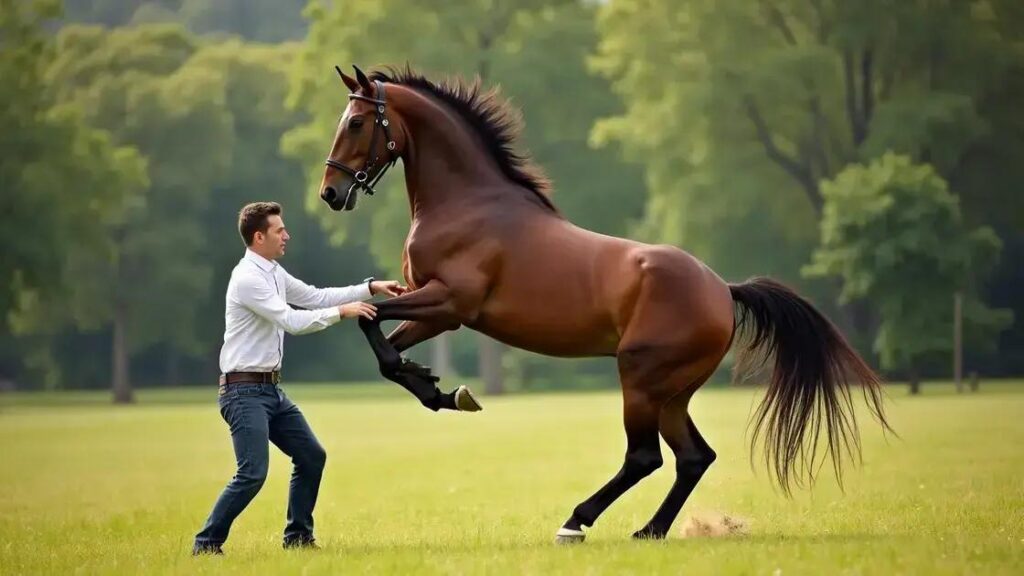Horse tricks are trained behaviors that showcase the bond between horses and their trainers, stemming from a deep understanding of equine behavior and effective training techniques. Using positive reinforcement, trainers can teach horses various impressive tricks that serve both entertainment and practical purposes. The science behind these techniques emphasizes the importance of trust, communication, and individual horse traits, allowing for a rewarding training experience.
Have you ever wondered about the captivating world of horse tricks? The debate around “Horse Trick: myth or reality?” sparks curiosity among equestrian enthusiasts and novice horse lovers alike. From stunning performances to whispered myths, this article delves into the truth behind popular beliefs and the genuine capabilities of these majestic animals. Prepare to uncover the facts, separate reality from fiction, and gain insights into the fascinating world of horse training and trick performances.
Understanding Horse Tricks and Their Origins
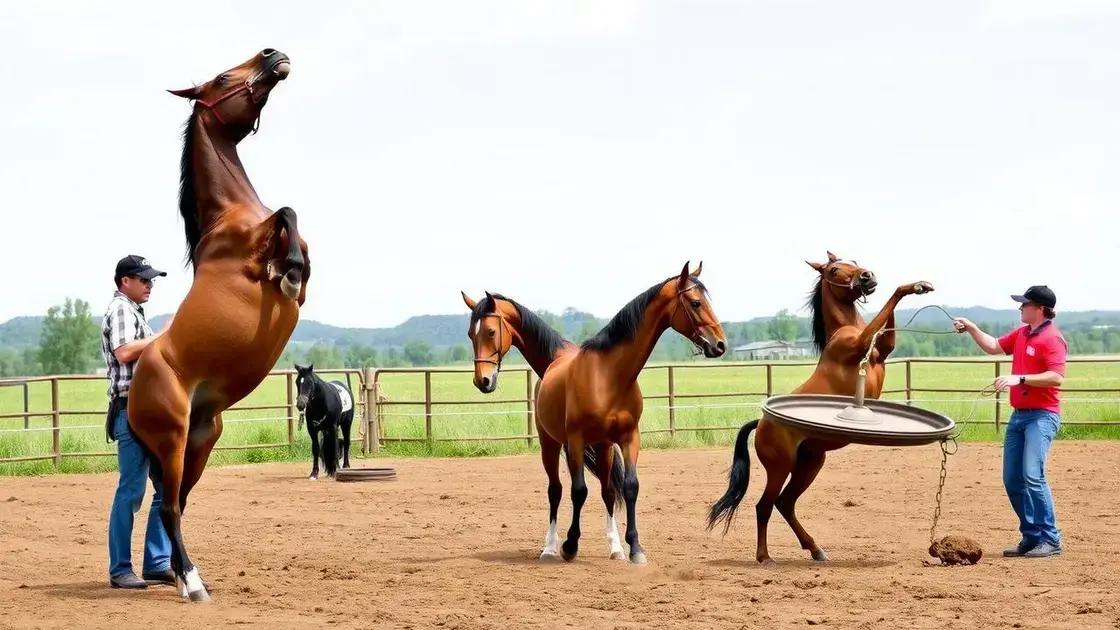
Understanding horse tricks involves exploring their origins and the relationship between humans and horses. Horse tricks refer to specific behaviors that horses can be trained to perform, often for entertainment or display. Many of these tricks have roots in ancient practices.
Origins of Horse Tricks
The origins of horse tricks can be traced back to various cultures. In ancient times, horses were essential for transportation and warfare. As humans began to understand horse behavior, they started to experiment with training techniques, resulting in the development of tricks. For example, the famous “lipizzaner” stallions, known for their stunning performances, emerged from a tradition that dates back to the Renaissance.
Types of Horse Tricks
Horse tricks can range from simple commands to complex routines. Common tricks include:
- Rearing: The horse raises its front legs off the ground, showcasing its strength and training.
- Bow: The horse bends its front legs and lowers its head as a sign of submission.
- Spinning: The horse turns in circles on command, demonstrating agility.
- Backing up: The horse moves backward, an essential skill for maneuvering.
Importance of Bonding in Training
A strong bond between the horse and trainer is crucial for effectively teaching tricks. This relationship is built on trust and understanding. Trainers use positive reinforcement, such as treats or praise, to encourage desired behaviors. Horses are sensitive animals, often responding better when they feel safe and respected.
Overall, understanding horse tricks and their origins reveals much about human-animal interactions and the art of training. These tricks reflect a blend of culture, skill, and companionship that continues to evolve over time.
Common Myths About Horse Tricks
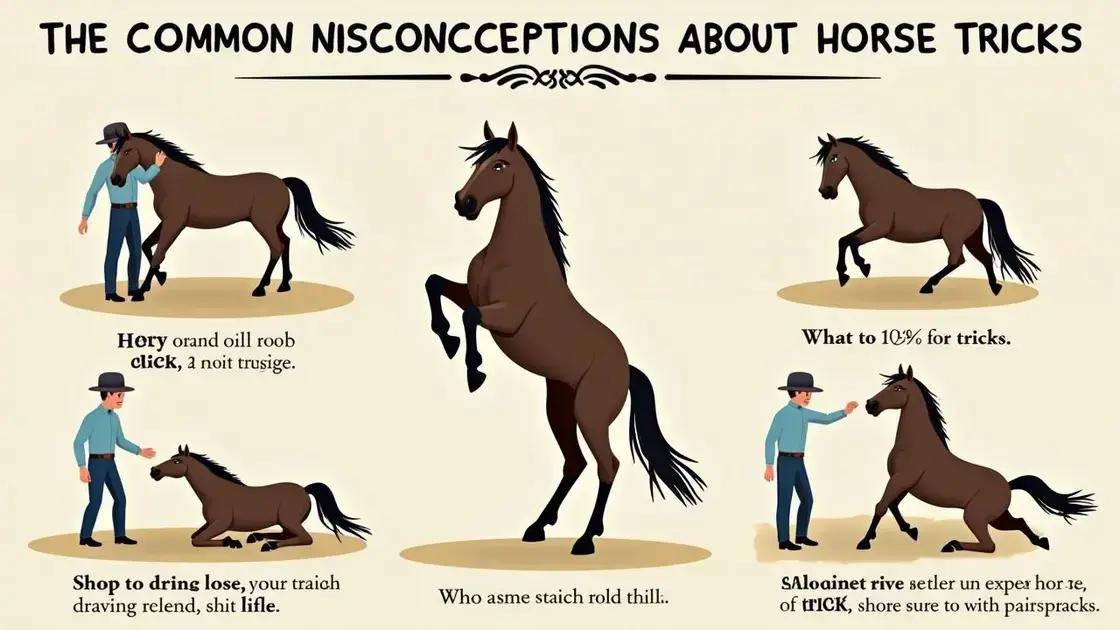
There are several common myths about horse tricks that often mislead people. Understanding these myths is crucial for appreciating the art of horse training and the abilities of these remarkable animals.
Myth 1: Horses Only Perform Tricks for Food
Many believe that horses will only do tricks if they are rewarded with food. While treats can motivate horses, they also respond to praise and positive reinforcement. This builds trust and encourages a bond, making training more effective.
Myth 2: Any Horse Can Learn Any Trick
Another myth is that all horses are capable of learning any trick. While many horses can learn a variety of skills, individual personalities, temperaments, and physical abilities may affect their capacity to perform certain tricks. It is important to assess each horse’s unique traits before training.
Myth 3: Tricks Are Just for Show
Some people think that horse tricks are only for entertainment purposes. However, many tricks, like backing up and spinning, enhance the horse’s overall training and responsiveness. These skills can be used in various situations, such as during riding or in shows.
Myth 4: Horses Don’t Enjoy Performing Tricks
Another common misconception is that horses do not enjoy performing tricks. In reality, many horses take pleasure in the interaction with their trainers and enjoy learning new tasks. The key is to ensure training is fun and engaging for the horse.
By debunking these myths, we can better understand the bond between horses and trainers, and appreciate the real capabilities of these incredible animals.
Real-Life Examples of Horse Tricks
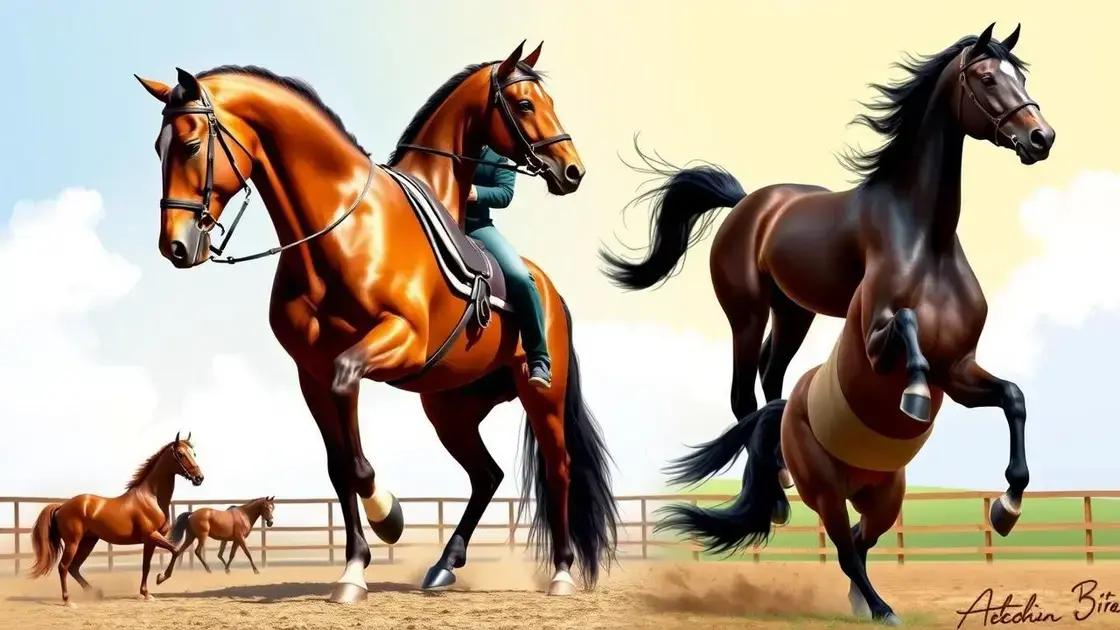
Exploring real-life examples of horse tricks not only showcases the incredible abilities of these animals but also highlights the bond between horses and trainers. Here are some fascinating examples:
The Lipizzaner Stallions
Known for their beautiful performances, the Lipizzaner stallions are famous for their intricate dressage routines. They perform tricks such as the “Levade” (standing on their hind legs) and the “Courbette” (jumping while on their hind legs) in grand shows, combining grace and power.
Bridleless Riding
Some trainers work with horses to perform tricks without a bridle. This feat shows advanced training and trust between the horse and rider. A famous example is the rider, Sophia B. who rides her horse, Jax, bridleless through obstacle courses, demonstrating control and connection.
Liberty Training
Liberty training allows horses to perform tricks without any restraints. Trainers like Ella B. showcase their thorough training by allowing horses to dance around them, change directions, and even bow on command. This style emphasizes the horse’s freedom and trusts the trainer.
Horses in Movies
Movie productions often use trained horses for specific tricks. For instance, in the film “The Black Stallion,” the horse named Cass Ole performed complex stunts and scenes that captivated audiences. These performances illustrate how training can lead to impressive feats in entertainment.
Circus Horses
Circuses often feature horses that perform various tricks, like skipping, dancing, and jumping through hoops. These acts not only entertain but also show the result of rigorous training and the horse’s ability to learn complex sequences.
These real-life examples illustrate the range of talent horses can exhibit through training and the joy they bring to both trainers and audiences alike.
The Science Behind Horse Training Techniques
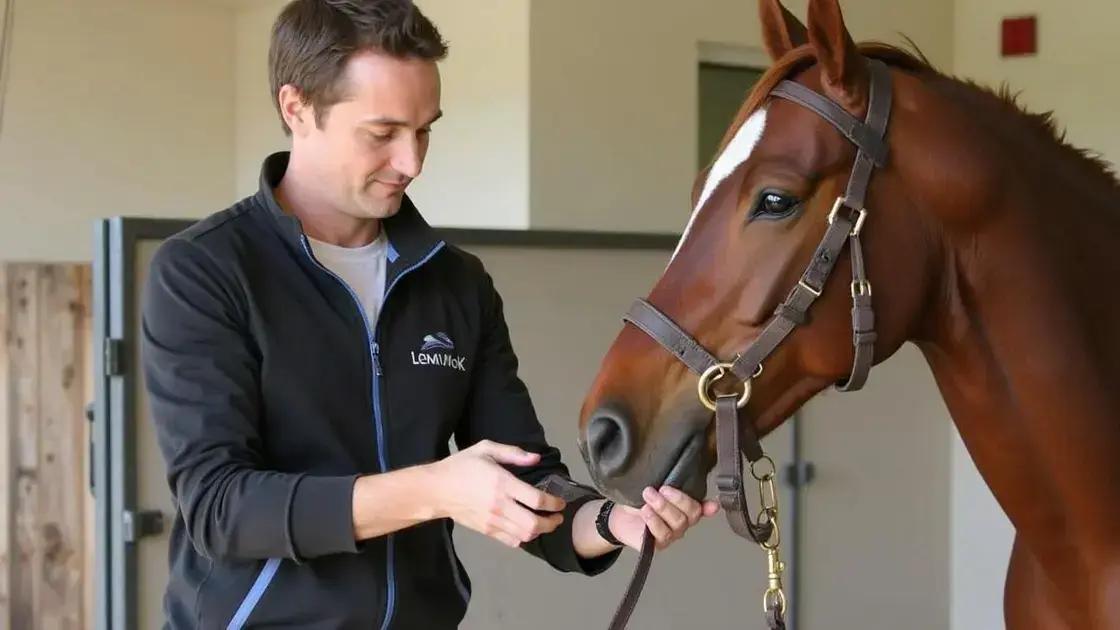
The science behind horse training techniques involves understanding equine behavior, psychology, and effective communication methods. Horses are sensitive creatures that respond to various stimuli, which can be harnessed during training.
Understanding Equine Behavior
Horses are prey animals, and their instincts drive much of their behavior. Understanding these instincts helps trainers to develop effective techniques. For example, a horse’s flight response means they may react quickly to perceived danger. Trainers must create a safe environment where horses feel secure.
Positive Reinforcement
Many modern training methods focus on positive reinforcement. This technique encourages desired behaviors by rewarding the horse with treats, praise, or attention. Positive reinforcement builds trust and enhances the bond between the horse and the trainer.
Operant Conditioning
This concept, which includes positive and negative reinforcement, helps shape behavior. For instance, when a horse performs a trick correctly, they are rewarded. If they do not respond as desired, they may be redirected or calmly shown what is expected without punishment. This method helps horses understand what behaviors are encouraged.
Body Language and Communication
Effective trainers use body language to communicate with horses. Since horses are highly observant and sensitive to human movements, clear, consistent signals are essential. This can include facial expressions, hand gestures, and posture while interacting with the horse.
Training Techniques and Tools
Common tools used in horse training, such as clickers or whips, assist in communication. Clicker training, for example, signals to the horse that they did something right and can be paired with treats, reinforcing positive behavior.
By integrating these scientific principles into their training techniques, trainers can foster strong relationships with their horses. This approach can lead to more effective training sessions and, ultimately, greater success in teaching various tricks.
Understanding the Truth Behind Horse Tricks
Throughout this exploration of horse tricks, we’ve uncovered the intricate blend of history, science, and training techniques involved in this fascinating art. From understanding the origins of horse tricks to debunking common myths, we’ve seen how these majestic animals are capable of remarkable feats through trust and communication.
Real-life examples highlight the talent horses can exhibit when trained with positive reinforcement and effective techniques. The science behind these training methods shows that horses are highly intelligent and responsive animals, eager to learn and perform.
As we further appreciate the relationship between trainers and horses, it becomes clear that the world of horse tricks is not just about performance; it’s about the bond created through understanding and respect. Recognizing this truth can deepen our admiration for horses and their incredible abilities.
FAQ – Frequently Asked Questions about Horse Tricks
What are horse tricks?
Horse tricks are trained behaviors that horses can perform, often for entertainment or training purposes, showcasing the bond between horses and their trainers.
Can any horse learn tricks?
While many horses can learn tricks, each horse has unique traits and may respond differently based on their personality and training methods used.
What is positive reinforcement in horse training?
Positive reinforcement involves rewarding horses with treats, praise, or attention when they perform desired behaviors, creating a trusting relationship.
Why is understanding horse behavior important?
Understanding horse behavior helps trainers develop techniques that cater to a horse’s instincts, enhancing their ability to learn tricks effectively.
Are horse tricks just for entertainment?
No, many horse tricks also serve to improve a horse’s overall training and responsiveness, fostering skills that are useful in various situations.
What role does body language play in horse training?
Body language is crucial in horse training, as horses are sensitive to human movements. Clear communication through body signals enhances understanding.

